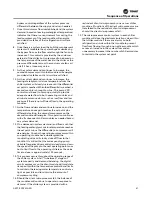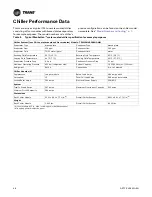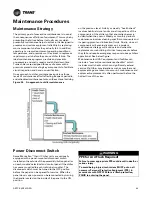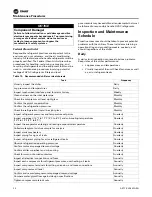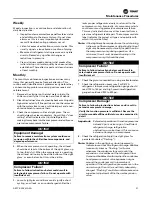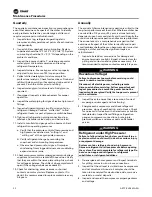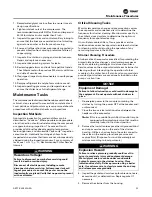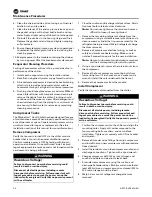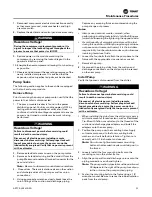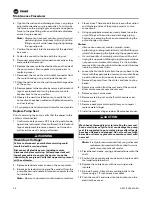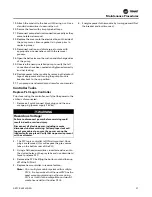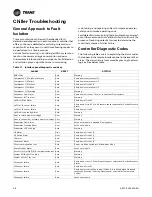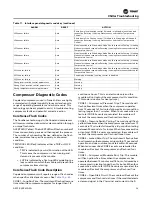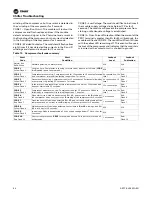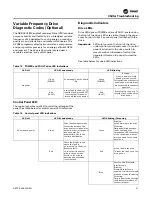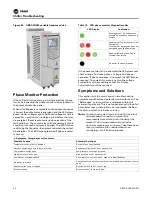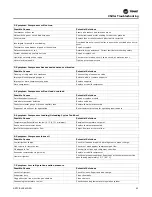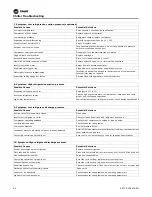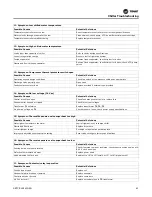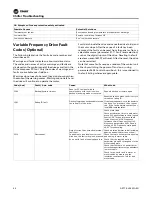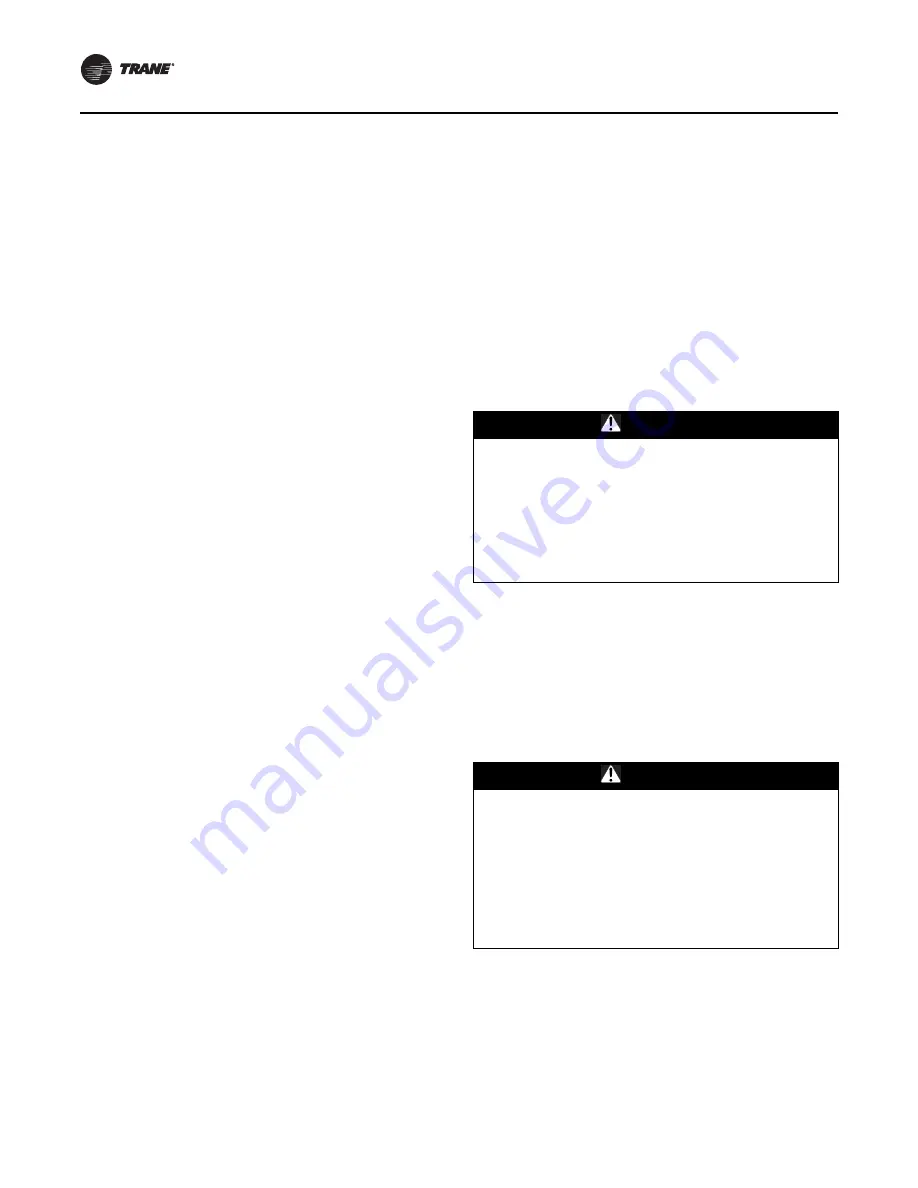
Maintenance Procedures
52
ARTC-SVX002A-EN
Quarterly
The quarterly maintenance inspection is a comprehensive
event that examines all aspects of the chiller to identify
early problems before they can damage a chiller and
require major repair or refurbishment:
1. Inspect alarm log, refrigerant operating/static
pressures and temperature set points of each module
independently.
2. Inspect chiller superheat and sub-cooling. System
superheat should be 10 °F to 12 °F (5 °C to 6 °C). System
sub-cooling should be 10+ °F (5 °C) depending on the
ambient conditions.
3. Inspect the approach delta T - entering evaporator
water/glycol mixture temperature and leaving
refrigerant temperature.
4. Inspect strainers. Ensure bypass valve is properly
adjusted to a minimum of 25% open position.
5. Collect chilled water/glycol mixture sample for
professional analysis. Check for cleanliness. Drain and
refill with clean solution if excessive sludge or dirt is
present. Flush the chiller prior to refilling.
6. Inspect water/glycol mixture levels. Add glycol as
required.
7. If equipped, inspect crankcase heaters for proper
operation.
8. Inspect the water piping for signs of leaks at joints and
fittings.
9. Inspect refrigerant piping circuit for signs of oil or
refrigerant leakage. Conduct “sniffer test” to find
refrigerant leaks. Inspect all pressure switch bellows.
10. Tighten all refrigeration piping connections (e.g.
rotalocks, Schrader valves, caps, and ball valves).
11. Install a manifold and gauge set to observe chiller’s
refrigeration operating pressures.
a. Verify that the pressure controls (low pressure and
high pressure switches) are “cutting in” and
“cutting out” at the appropriate pressures.
b. Verify refrigerant charge by recording the
superheat and sub-cooling temperatures.
c. Observe head pressure for signs of improper
condensing from clogged strainers or a modulating
expansion valve issue.
12. Check compressor motor amperage draws and voltage
supplies and maintain a record of those values. Verify
that they are within the name plate rating. Also, check
for voltage imbalance. The chiller’s phase monitor will
open if the voltage imbalance exceeds 4%.
13. Check for chattering, excessive wear or burned
contacts on motor starters. Replace contacts, if in
doubt. It is recommended to replace contactors every
5-6 years.
Annually
The annual chiller maintenance inspection is critical to the
long-term performance of the chiller. Whether a chiller has
a service life of 15 years or 30 years is almost entirely
dependent upon how consistently and how diligently the
annual maintenance inspection and tasks are performed.
The annual event is a comprehensive inspection that
examines all aspect of the chiller to identify and repair
small problems before they can become major issues that
damage a chiller and require significant repair or
refurbishment.
1. Inspect all electrical connections for damage and
ensure terminals are tight. Inspect all contactors for
pitting and corrosion and replace as necessary. It is
recommended to replace contactors every 5-6 years.
2. Inspect fuses to ensure they are secure, of correct
amperage, undamaged and functioning.
3. Energize each compressor and check refrigerant
pressures, signs of overheating, and oil leaks. Check
for noises and for leaks with an electronic or bubble
leak detector. Inspect flared fittings, refrigeration
gauges, compressor connections, braze joints,
pressure switches, and access ports on Schrader
valves.
4. De-energize each compressor and inspect terminals
for pitting, corrosion, and loose connections.
5. Inspect that the oil level is visible in each compressor
and not discolored. Annual oil samples should be
taken to be analyzed for destructive acids, corrosive
materials, or metal deposits.
6. Inspect and record the compressor amperage draws
and voltage.
WARNING
Hazardous Voltage!
Failure to disconnect power before servicing could
result in death or serious injury.
Disconnect all electric power, including remote
disconnects before servicing. Follow proper lockout/
tagout procedures to ensure the power can not be
inadvertently energized. Verify that no power is present
with a voltmeter.
WARNING
Refrigerant under High Pressure!
Failure to follow instructions below could result in an
explosion which could result in death or serious injury
or equipment damage.
System contains refrigerant under high pressure.
Recover refrigerant to relieve pressure before opening
the system. See unit nameplate for refrigerant type. Do
not use non-approved refrigerants, refrigerant
substitutes, or refrigerant additives.










